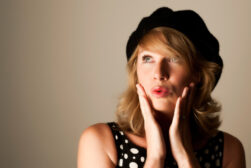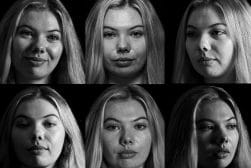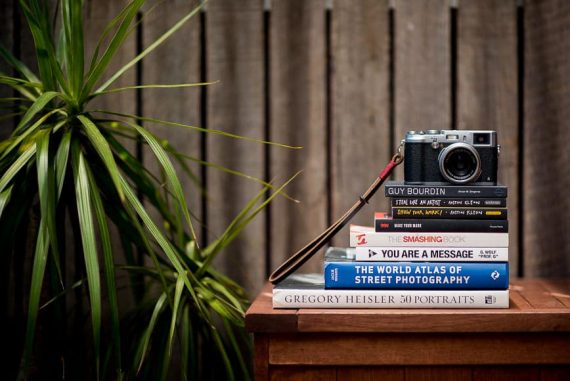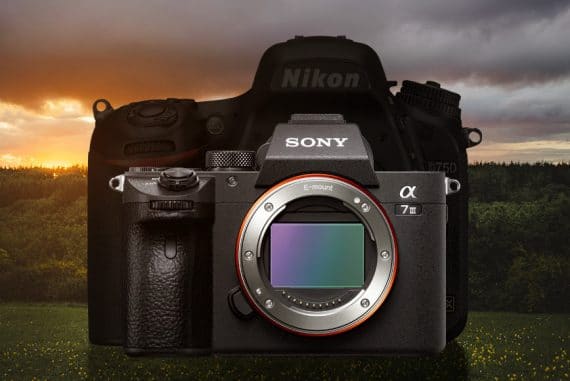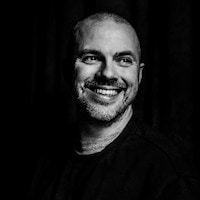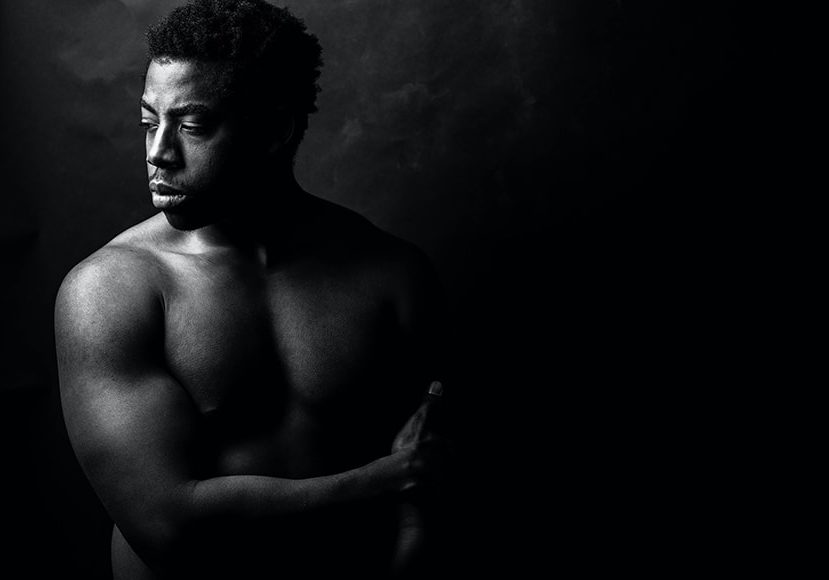
Chiaroscuro Lighting: 7 Best Techniques, Examples & Setups
Elevate your portrait photography using this dramatic technique! In this guide to Chiaroscuro lighting, we'll cover 7 tips and what you need to know.
If you want to elevate your portrait photography by using one of the oldest forms of photography lighting manipulation, this guide to Chiaroscuro lighting is for you.
We’ll look briefly at Chiaroscuro’s origins in painting, and learn from its wide and varied use in both film and photography.
Adding the Chiaroscuro high-contrast look to your photos for creative effect is easier than you think, so let’s dive right in.

Revolutionary lighting simulation software that streamlines studio photography and film making.
Use code SHOTKIT10 to save 10%.
What is Chiaroscuro Lighting?
Chiaroscuro is an Italian term, made from two words – chiaro meaning bright or clear and scuro meaning dark or obscure. So, put simply, you could say the definition of chiaroscuro is ‘light/dark’.
The word chiaroscuro was first used to describe the work of artists such as Leonardo da Vinci and Caravaggio in the Italian Renaissance period. The technique is now widely used in both photography and film.
In photography, the chiaroscuro lighting technique can be defined simply as high contrast lighting. You use the extremes of dark and light to create an arresting image. It can be used in colour or black and white photography.
In this article, we are considering chiaroscuro lighting for portraits and people, though it can also be seen in many different forms of photography. These include still life and street and landscape photography, where the sun or street lighting can throw shadows into some areas while lighting up others.
As well as dramatic impact, chiaroscuro also creates an atmosphere, often showing a face or figure appearing out of an obscured dark background.
You may even have used the chiaroscuro lighting technique in your own photography many times, without knowing!
At its simplest, the chiaroscuro technique is most often produced by the use of strong artificial lighting set to one side of a subject – or by the available lighting, such as a window.
See also: how do I capture a dark picture?
-
Why Is Chiaroscuro Lighting Used?
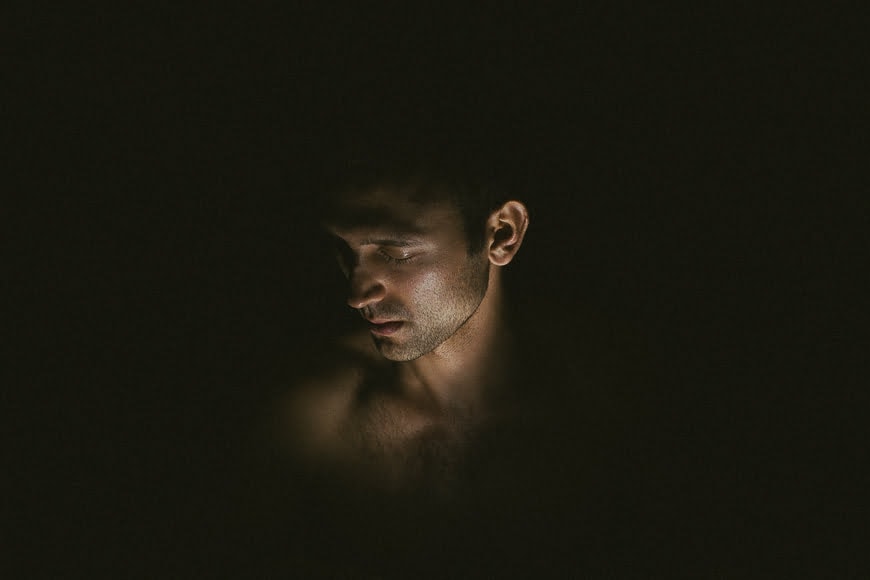
Chiaroscuro is an Italian term meaning ‘light and dark’. It’s a highly dramatic lighting technique.
Chiaroscuro in art or photography can be used for impact or dramatic effect.
In portrait photography, chiaroscuro is used to create a strong individual effect revealing the structure of the face or figure and the character of the sitter.
The light can be manipulated to show, for instance, a head and shoulders appearing out of a dark, undefined background that seems to envelop them.
Looking at a photograph, a viewer will not simply see light and dark area across a face. The image will evoke the viewer’s previous experiences about the associations or meaning of ‘light’ and ‘dark’ as concepts.
Psychologically, darkness can be threatening or welcoming – somewhere to shy away from or somewhere to retreat into, to hide.
Light is usually the bright side of the road, revealing the subject, though it too can be threatening – the torch beam of a pursuer.
Light and dark together can be used to create tension. Think of the effects used in film noir (a film genre popularised in the 1940s and 1950s) as characters hide and are revealed in the shadows and bright lights of those mean streets.
The effect on a face creates a tension between what is seen clearly and what is unseen or only dimly perceived.
-
What Is Chiaroscuro Called Today?
The simplest term is ‘high contrast lighting’, though you’ll come across ‘chiaroscuro’ and ‘chiaroscuro lighting’ quite often. The term ‘Rembrandt lighting’ is used to describe a particular lighting effect related to chiaroscuro.
Today the term ‘Renaissance lighting’ is used to indicate the use of lighting techniques to obtain a Renaissance feel – as in a Leonardo or a Caravaggio painting.
How Much Do You REALLY Know About Photography?! 🤔
Test your photography knowledge with this quick quiz!
See how much you really know about photography...

-
How Did Leonardo da Vinci Use Chiaroscuro?
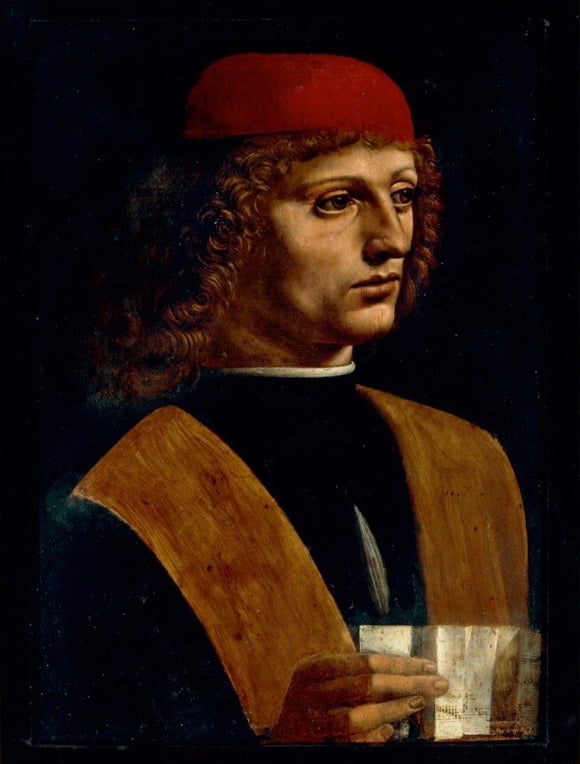
Da Vinci’s use of the chiaroscuro lighting technique gave his figures a three-dimensional effect.
Leonardo da Vinci used chiaroscuro lighting to make his figures look solid and three dimensional, as in his unfinished painting pictured above ‘Portrait of a Musician’.
Leonardo softened the edges between the areas of dark and light to create a realistic look, a technique he called ‘sfumato’.
In modern terms, he increased the range between brightness and contrast at the expense of colour, though not dispensing with intermediate tones.
You can study the ‘Mona Lisa’ to see how he has used directional lighting in a more nuanced way and how much he understood about keeping detail in both light and shadowed areas of his painting.
7 Chiaroscuro Lighting Tips
I hope this lighting guide shows that chiaroscuro lighting doesn’t have to be about expensive equipment.
In all the examples, small movements of the lights and the angle of the sitter’s head may make a big difference to the shadows thrown and the overall effect. And remember, it’s not just the lights and camera that move – so can the sitter/subject.
If you’re taking a portrait of a sitter, do them the courtesy of getting the room and your equipment set up in advance and take some test shots.
The thing to remember is that these are techniques, not formulas. Be prepared to experiment – and then experiment again!
Now, onto my seven chiaroscuro lighting tips.
1. Spot Meter for Accurate Exposure
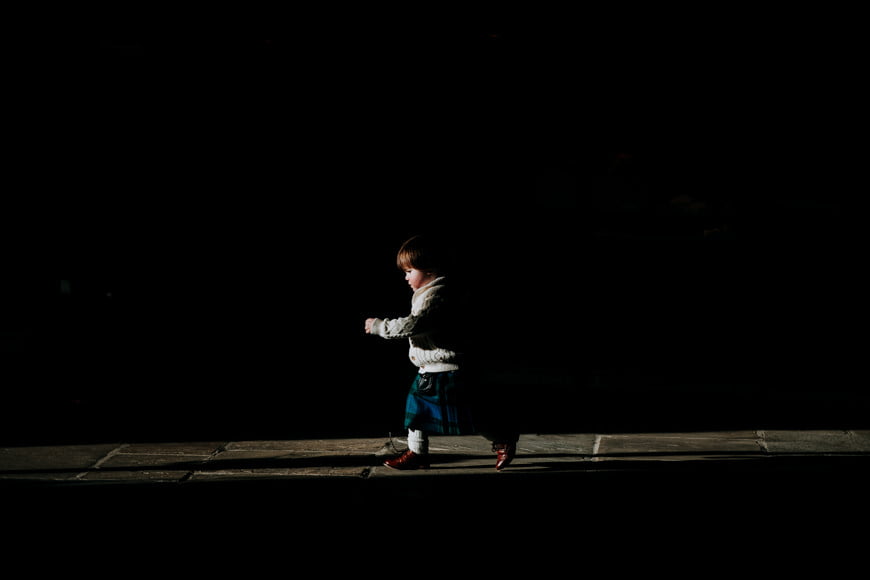
Harsh sunlight can sometimes be really challenging to shoot in. However, by switching your camera to spot metering you can use strong sunlight to your advantage.
By using spot metering you’ll meter for the subject only – or for wherever you place your focus point. In this image, the eye is drawn straight to the subject (the little boy) and the overall scene is presented in high contrast and is very atmospheric.
Using spot metering allows you to capture the subject in the available light, leaving the rest of the scene thrown into shadow. You then have achieved a chiaroscuro image captured ‘in camera’, using only the available light.
See our full guide to metering in photography here, and some examples of shadow photography here.
2. Use an Artificial Lighting Setup to Create a Chiaroscuro Effect
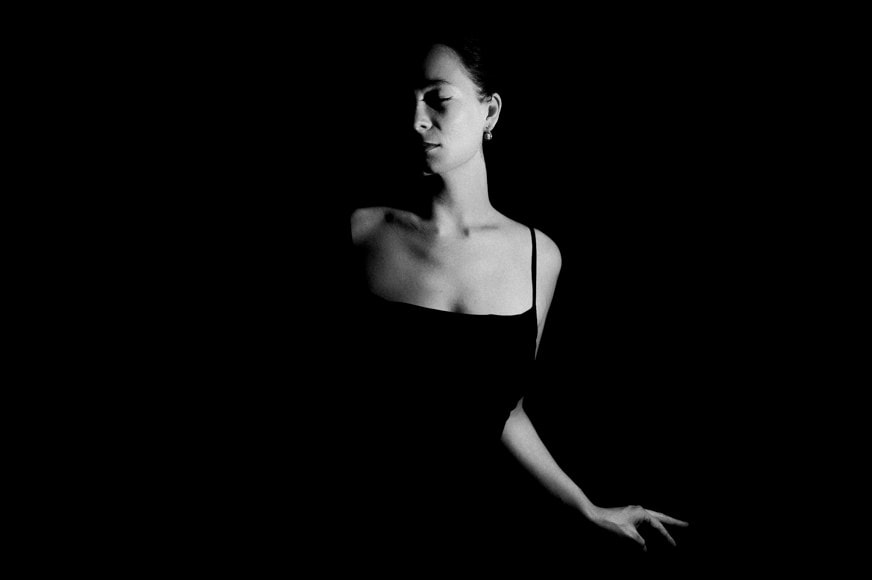
Creating an effective chiaroscuro portrait is easier than you may think. Use a flash – with triggers and a light stand if you have them – and set the shutter very high, to remove any ambient light.
This way the only light recorded is created by the flash. If you zoom flash too, it will intensify the light on the subject and leave the background dark.
You don’t need to invest in expensive backdrops. You can just use a dark wall, as in this film noir-esque image which uses chiaroscuro lighting techniques to really highlight the subject.
3. Use Available Light for a Simple Chiaroscuro Image
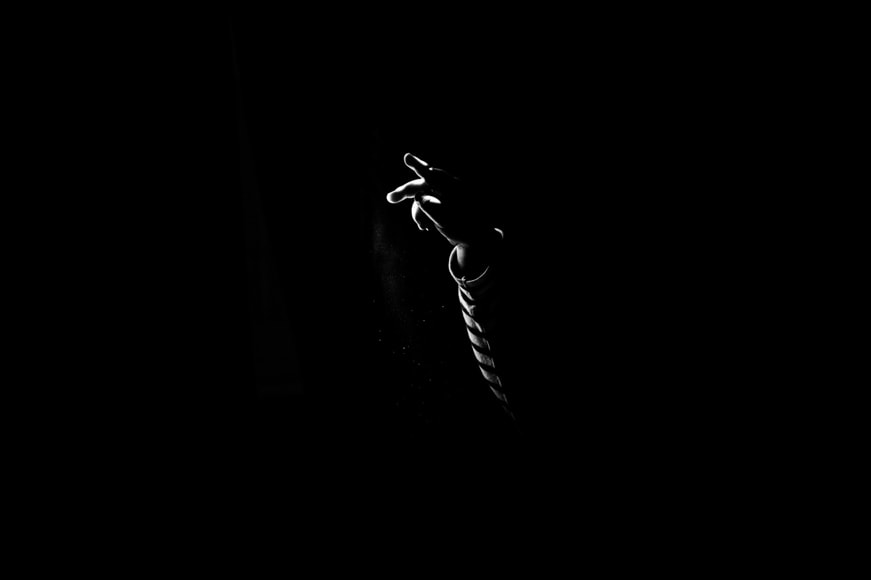
You don’t need a speed light to try out a chiaroscuro lighting technique. You can try it in any room with a window and dark walls!
Set your camera to spot metering and position your subject (a person, an object, or yourself for a self-portrait) to one side of the window.
Then control the light with your exposure – underexposing can really enhance the drama of the chiaroscuro lighting style – or even by drawing the curtains a little. Experiment and have fun!
4. Use Multiple Light Sources to Vary Your Lighting Effects
Why stick with one light source? There’s no reason not to introduce a second light and play with your imagery and try different ideas.
In the main image at the top of the article, you can see the photographer has partly lit the background on the left side of the figure. The right side is entirely empty creating a black negative space.
You can achieve this by using multiple light sources, as Rembrandt did. However, unlike Rembrandt – or the film director Stanley Kubrick, in his film Barry Lyndon – you don’t have to use candles!
You can use two lights or flashes, with softboxes to diffuse the light.
5. Take Self-Portraits for Practice
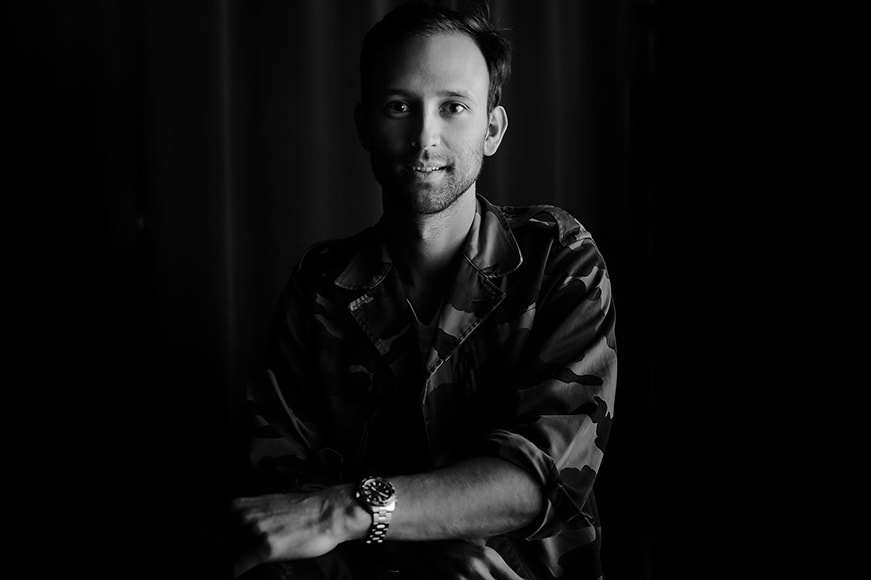
Chiaroscuro lighting is perfect for self-portraiture.
A self-portrait is all about you after all, not the background! So, as in this image, use the chiaroscuro lighting technique to make an effective portrait of yourself.
There’s no need for a model: you can practice varying lighting setups, artificial or ambient, again and again.
B & W self-portraits work especially well, since the viewer isn’t distracted by colours.
6. Use Rembrandt Lighting to Take Striking Portraits
Rembrandt used a particular lighting set-up that’s easy to replicate. Simply place one sidelight above the face shining down on it. Then another light source – a smaller lamp or even a reflector – on the shadowy side.
The effect is to show the face as a solid with one side in shadow but with a small triangle of light under the eye on the cheek. The eyes should also reflect some light, even if the eye sockets and forehead are in shadow.
You can work away at balancing the lights and sitter’s position to achieve a perfect Rembrandt effect, or stop when you have created a good set-up for your portrait.
7. Shoot in RAW to Make the Most of Your Highlights
However you create the chiaroscuro effect in your images, you’ll no doubt want to edit them to enhance their effectiveness. With this in mind, ensure you shoot your chiaroscuro images in the RAW file format.
Photoshop, Lightroom and other photo-manipulation applications have multiple tools which you can use to increase the contrast, or work on the shadows and highlights.
And by shooting in RAW you not only record the highest quality image, you’ll also give yourself the opportunity to recover the highlights to their maximum extent.
This is so important if you’re looking to add a little subtlety to your high contrast image by including more detail in the highlights.
Whichever editing software you use, you’ll have to decide where you draw the line between loss and retention of detail. Here’s a guide to editing portrait photos using Adobe Lightroom.
Chiaroscuro Lighting FAQs
What is the chiaroscuro technique?
The chiaroscuro technique is using extremes of dark and light to create an impactful image. In photography, this is achieved through the lighting setup.
What is the opposite of chiaroscuro?
Chiaroscuro is often used as a low-key lighting technique in photography. So while there’s no exact antonym to chiaroscuro, you could consider high-key lighting to be something of an opposite effect.
Why is chiaroscuro important?
Historically, chiaroscuro was important because it gave artists a new way to make their paintings look three-dimensional. Today, it’s important to photography and cinematography because it can be used to dramatically increase the impact of an image.
Final Words
The beauty of the chiaroscuro lighting technique is that, when you have understood the idea of it, you can create the effect in many different ways and work to your own personal taste.
Whether you use large studio lamps and softboxes, a speedlight and trigger set-up or, most simply of all, just available light – it’s a new world waiting.
You can spend a day setting up one image or create one on the fly. Chiaroscuro can turn harsh natural lighting into a stunning scene full of contrast. Or, you can utilise it to transform the darkest surroundings into the perfect backdrop for a striking portrait.
So, all in all, chiaroscuro lighting is such a versatile technique that you can use every day, in professional and personal work. Use it on a creative portrait, on your next corporate commission, or use it make your family photography stand out.
However you choose to utilise chiaroscuro lighting in your photography, you will be using one of the most effective lighting techniques available.

Check out these 8 essential tools to help you succeed as a professional photographer.
Includes limited-time discounts.





